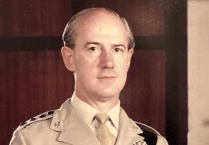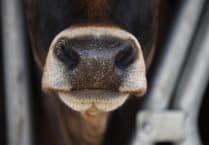Over the weekend, more than 30 literary scholars from the UK, Canada, Denmark, Germany, Poland and the USA, assembled in Brecon for a conference to celebrate the life and works of three influential seventeenth-century poets.
The scholars gathered to celebrate Henry and Thomas Vaughan and George Herbert, and the inspiration they have been to later artists, writers and composers.
It had been hoped to mark the 400th anniversary of the birth of the twins Henry (known as the Swan of Usk) and Thomas, in April 2021 but Covid intervened, so it proved to be a belated birthday event.
The event started with a poetry reading in y Gaer, which gave delegates an opportunity to see the museum and some of its treasures. Not least, the first edition of Vaughan’s Olor Iscanus published in 1651, and presented to the Museum in 1932 by Gwenllian Morgan, who had long championed Vaughan’s work.
The library was also presented with a copy of a recent book about the Bostonian scholar Louise Guiney, who led a campaign in 1895 to restore Henry Vaughan’s grave at Llansantffraed. This adds to the important collection of works relating to the Vaughan in y Gaer.
A sculpture by local artist, Philippine Sowerby inspired by Vaughan’s poem The Book was also on display.
A day of conference papers was followed in the evening with a talk in the cathedral by Dr Rowan Williams, entitled ‘Varieties of Absence: Henry Vaughan’s poetics of loss’.
Dr Williams has spoken before in Brecon about Henry Vaughan, giving the 2017 Sir John Lloyd lecture, subsequently published in Brycheiniog.
We have no portrait of Henry Vaughan but he features as one of the figures on the reredos (altarpiece) at the east end of the cathedral and one wonders whether this is something else we owe to Gwenllian Morgan.
On Saturday afternoon, the Brecknock Society, Vaughan Association and Siegfried Sassoon Fellowship (Sassoon visited Vaughan’s grave in 1924) laid the traditional wreaths on Vaughan’s grave at Llansantffraed and there was an opportunity to see the Vaughan garden in Talybont. Maintained by local volunteers, this has many of the herbs and plants which Henry Vaughan would have used in the latter part of his life when he was a physician.
In the evening, there was a concert in the Plough Chapel performed by soprano Emily Owen and lutenist James Bramley. They delighted audience with a programme (entitled Henry Vaughan: his lute, his fancy and his flights) of works by composers such as Henry Purcell and John Dowland
The conference concluded after lunch on Sunday with memories refreshed of the work of three great Welsh writers whose influence continues to this day.





Comments
This article has no comments yet. Be the first to leave a comment.